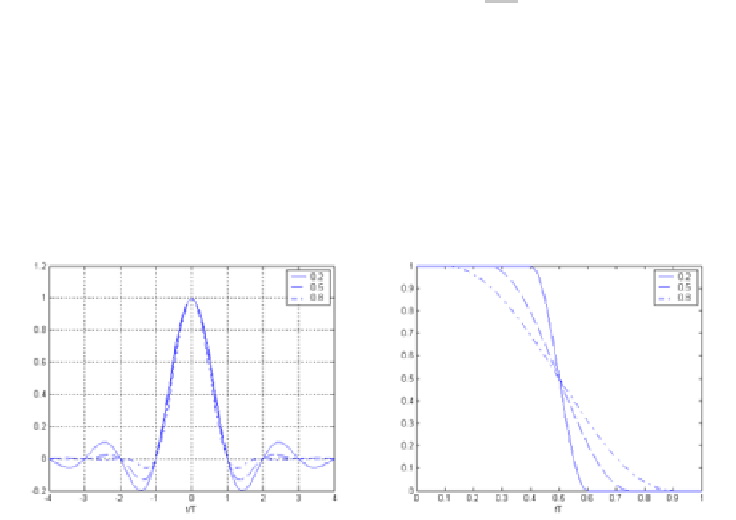Cryptography Reference
In-Depth Information
X
t
0
(
f
)=
T
1
−α
2
T
if
0
≤|
f
|≤
2
1+sin
π
α
(
)
T
1
1
α
2
T
−
1+
α
2
T
2
T
−|
f
|
if
≤|
f
|≤
(2.129)
>
1+
α
2
T
0
if
|
f
|
or again:
X
(
f
)=
p
(
t
0
)
X
t
0
(
f
)exp(
−
j
2
πft
0
)
(2.130)
whose waveform is:
x
(
t
)=
p
(
t
0
)
sin
π
(
t−t
0
)
cos
πα
(
t−t
0
)
T
T
π
(
t−t
0
)
T
(2.131)
4
α
2
(
t−t
0
)
2
T
2
1
−
Figure 2.23 - Frequency and time domain characteristics of a raised-cosine function
for different values of the roll-off factor
α
.
Figure 2.23 shows the frequency domain
X
t
0
(
f
)
and time domain
x
(
t
)
char-
acteristics of a raised-cosine function for different values of
α
, called the
roll-off
factor.
The bandwidth of the raised-cosine function is
W
=(1+
α
)
/
2
T
;0
1
.
Function
x
(
t
)
is again non-causal in the strict sense but the more the roll-off
factor increases, the greater this function decreases. Thus, by choosing
t
0
large
enough, implementing a raised cosine becomes possible. Figure 2.24 plots the
eye diagrams obtained with raised-cosine functions for different values of roll-off
factor.
All the plots of
x
(
t
)
pass through a single point at the sampling time
t
0
+
nT
,
whatever the value of the roll-off factor. Note that the larger the roll-off factor,
the greater the horizontal aperture of the eye diagram. For
α
=1
,theaperture
of the eye is maximum and equal to
T
; the sensitivity to any imprecision about
the sampling time is thus minimum.
≤
α
≤
















